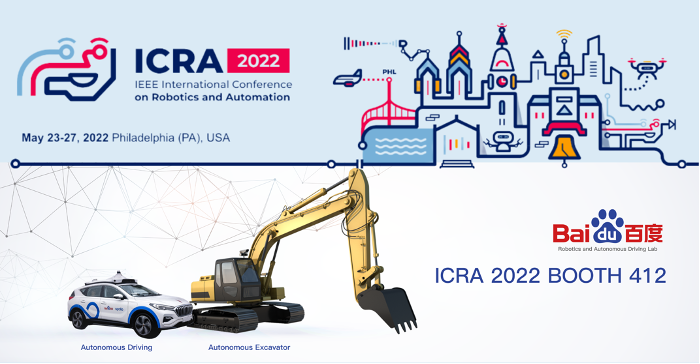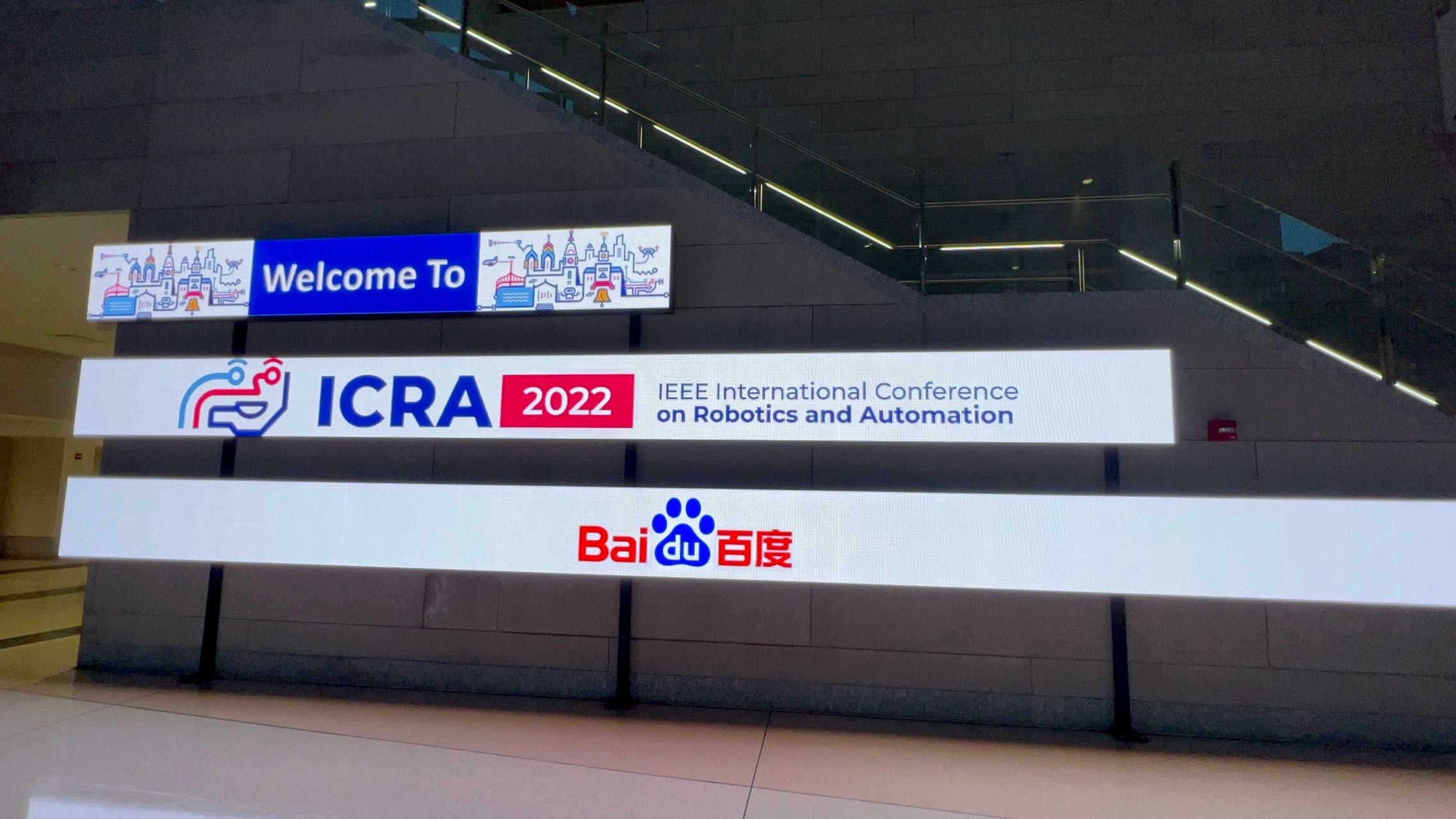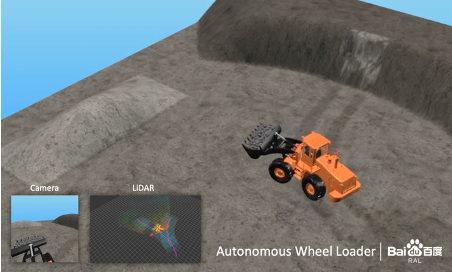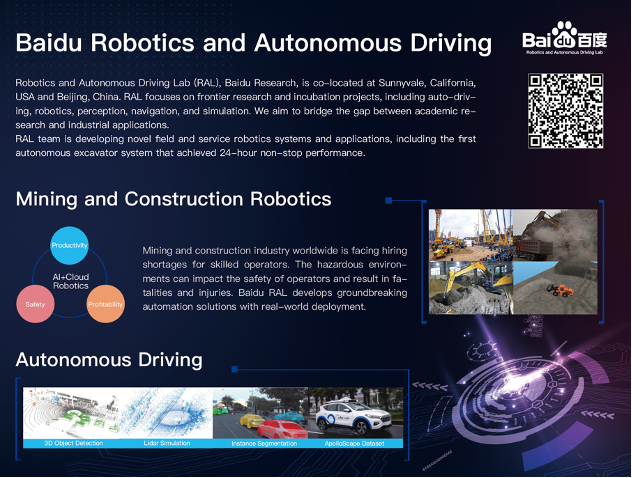2022-05-24
Back to list
This week marks the start of the 2022 IEEE International Conference on Robotics & Automation (ICRA), a leading robotics conference with close to 6,000 participants from 91 countries and 94 partners and exhibitors. Baidu is proud to be a silver sponsor and showcases cutting-edge research at ICRA 2022. The Robotics and Autonomous Driving Lab (RAL) at Baidu Research will present a research paper on excavation reinforcement learning and co-organize a workshop on the future of construction robotics.

These research innovations are Baidu RAL's latest efforts to develop automation technology for mining and construction machinery. Automation is gaining traction in the heavy construction industry that faces hiring shortages due to hazardous and toxic work environments. Last year, Baidu RAL introduced an autonomous excavator system (AES) for material loading tasks. The research was published in the journal Science Robotics. As a result, several of the world's leading construction machinery companies have adopted AES to automate traditional heavy construction machinery.
Baidu RAL will also present its latest progress as part of peer-reviewed papers at other leading conferences on robotics and control, including the Robotics System and Science (RSS) and the American Control Conference (ACC).
ICRA Research Paper: Excavation Reinforcement Learning Using Geometric Representation
Excavating irregular rigid objects, such as fragmented rocks and wood blocks, in cluttered environments is challenging due to the complex interaction dynamics and highly variable geometries.
Baidu RAL will present a research paper on using reinforcement learning (RL) for rigid objects excavation. In this paper, Baidu researchers adopt reinforcement learning (RL) to tackle this challenge and learn policies to plan for a sequence of excavation trajectories for irregular rigid objects given point clouds of excavation scenes. Moreover, they separately learn a compact representation of the point cloud on geometric tasks that do not require human labeling. The use of novel representations reduces the training time for RL while achieving asymptotic performance like an end-to-end RL algorithm. When using a policy trained in simulation directly on a real scene, the researchers show that the policy trained with the representation outperforms end-to-end RL. To the best of our knowledge, this paper presents the first use of RL to plan a sequence of excavation trajectories of irregular rigid objects in clutter.

Excavation Reinforcement Learning for Irregular Rigid Objects
ICRA Workshop: Future of Construction: Build Faster, Better, Safer - Together with Robots
Dr. Liangjun Zhang, Head of RAL, Baidu Research is co-organizing a workshop bringing together academic researchers and industry practitioners, aiming to create a vision for robotics in the construction industry and facilitate discussion on technology for future construction workplaces. The workshop features invited speakers from leading universities and industries. The workshop also features papers from researchers working in closely related fields and a SLAM challenge.
ICRA Exhibit Booth
Baidu RAL will demonstrate their cutting-edge research and technology at ICRA 2022 in Philadelphia, Pennsylvania, from May 23rd to May 27th at booth 412.
Research Papers at RSS and ACC
At RSS, Baidu RAL will present their novel work, "TNS: Terrain Traversability Mapping and Navigation System for Autonomous Excavators." This paper presents a terrain traversability mapping and navigation system (TNS) for autonomous excavator applications in an unstructured environment. The researchers use an efficient approach to extract terrain features from RGB images and 3D point clouds from LiDAR, and incorporate them into a global map for planning and navigation. The resulting system can adapt to changing environments and update the terrain information in real-time. Moreover, they present a novel dataset, the Complex Worksite Terrain (CWT) dataset, which consists of RGB images from construction sites with seven categories based on navigability.

Visual results of TNS
These novel algorithms improve the mapping accuracy over previous SOTA methods by 4.17-30.48% and reduce MSE on the traversability map by 13.8-71.4%. Based on TNS, they demonstrate the first autonomous excavator that can navigate through unstructured environments consisting of complex terrain features. The video of this work can be found here: https://youtu.be/3Tgv0goK5-s

At ACC, Baidu RAL will present their work, "Autonomous Wheel Loader Trajectory Tracking Control Using LPV-MPC." The authors present a systematic approach for high-performance and efficient trajectory tracking control of autonomous wheel loaders. With the nonlinear dynamic model of a wheel loader, nonlinear model predictive control (MPC) is used in offline trajectory planning to obtain a high-performance state-
control trajectory while satisfying the state and control constraints. In tracking control, the nonlinear model is embedded into a Linear Parameter Varying (LPV) model, and the LPV-MPC strategy is used to achieve fast online computation and good tracking performance. A video with loading cycles completed by our autonomous wheel loader in the simulation environment can be found here: https://www.youtube.com/watch?v=QbNfS_wZKKA
About Baidu RAL
Robotics and Autonomous Driving Lab (RAL), Baidu Research, is co-located in Sunnyvale, California, USA, and Beijing, China. RAL focuses on frontier research and incubation projects, including autonomous driving, robotics, perception, navigation, and simulation. We aim to bridge the gap between academic research and industrial applications. The RAL team is developing novel construction and mining robotics systems and applications, including the first autonomous excavator system that achieved 24-hour non-stop performance.
